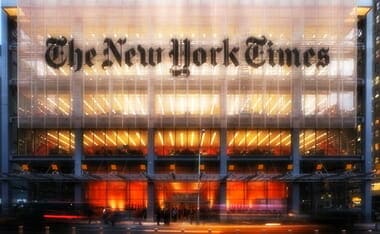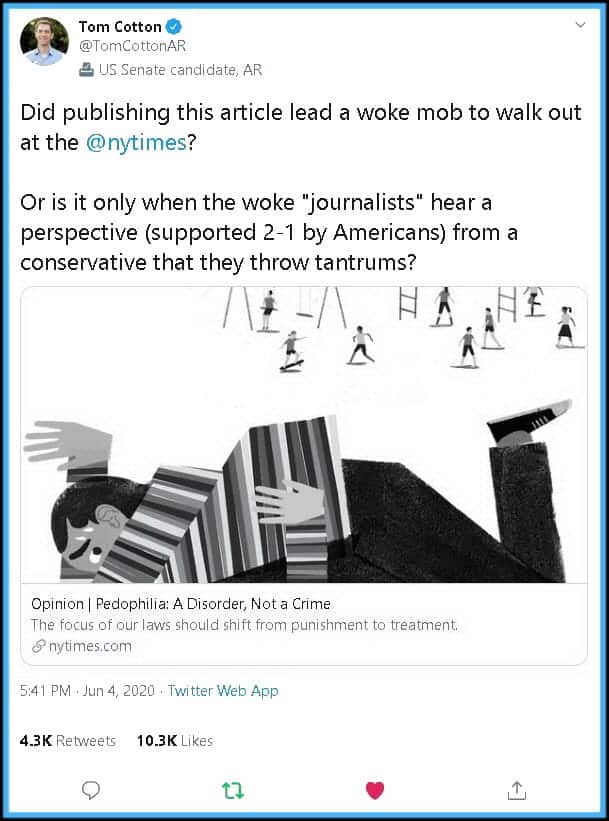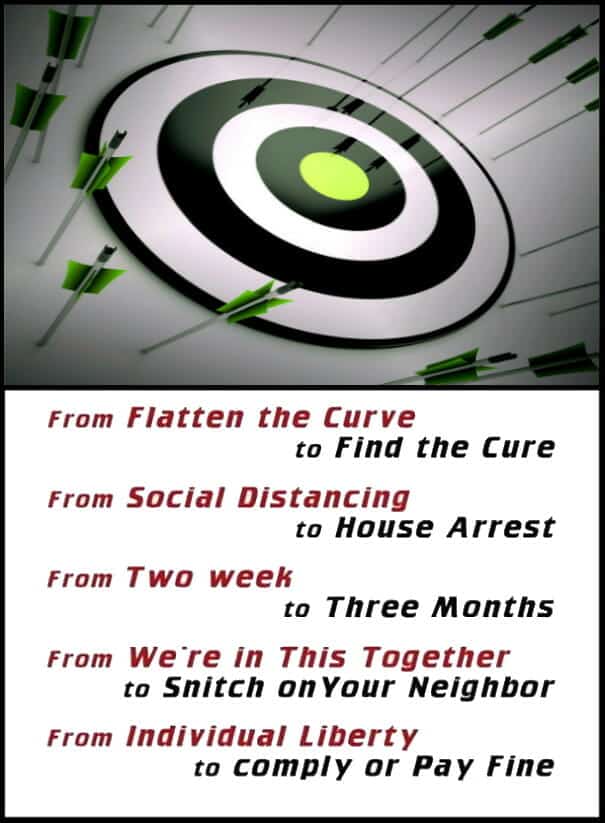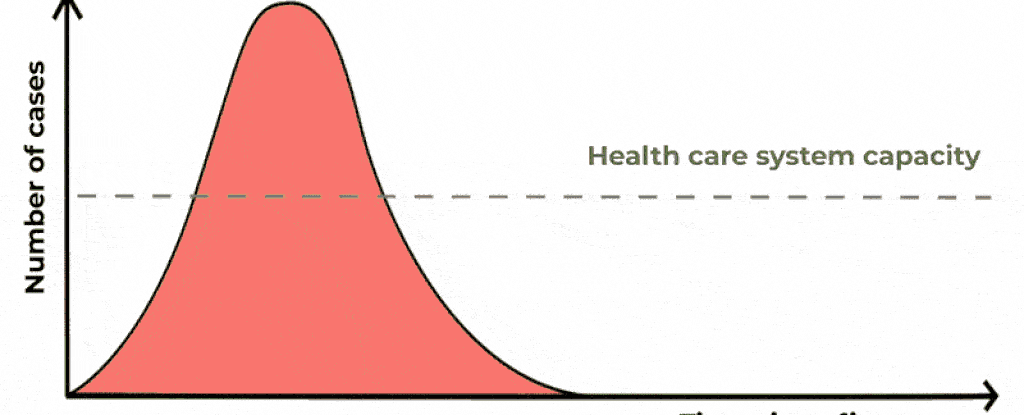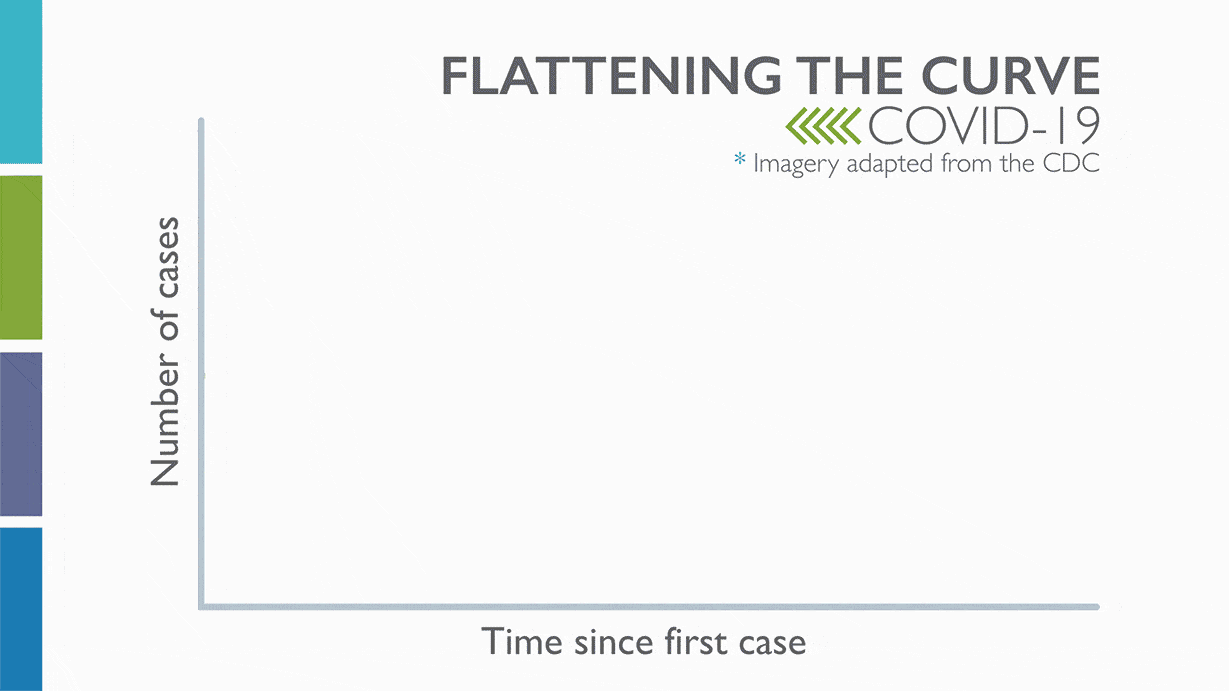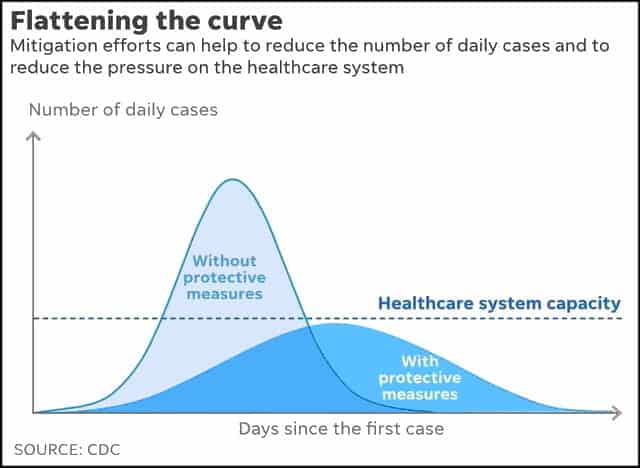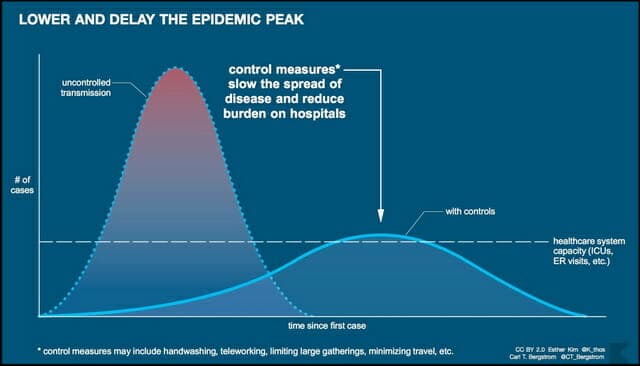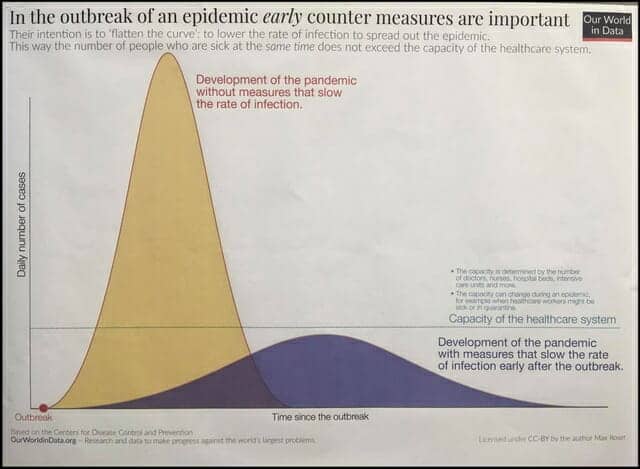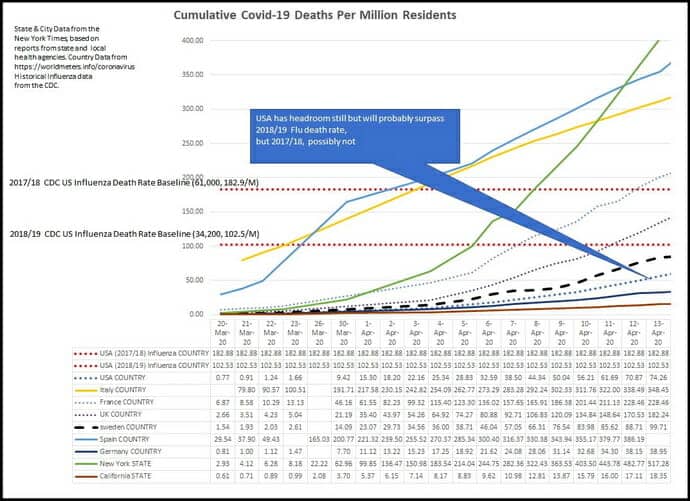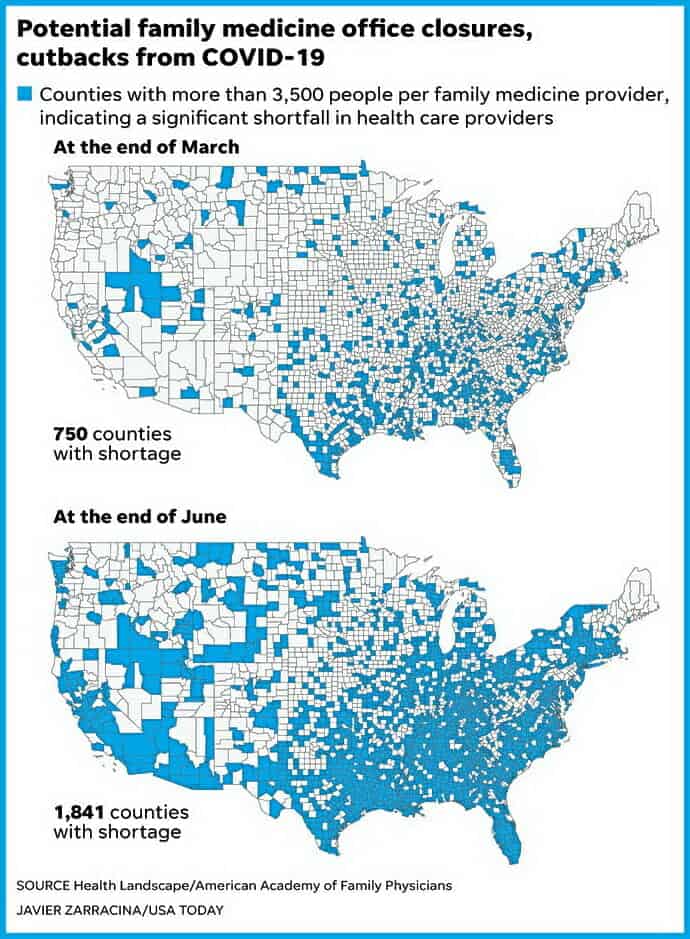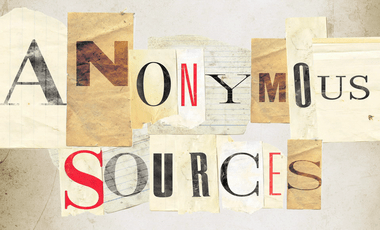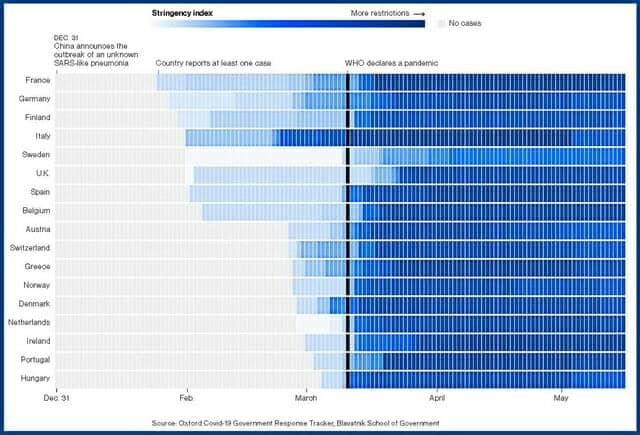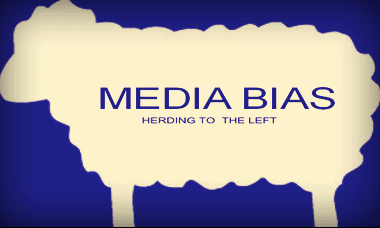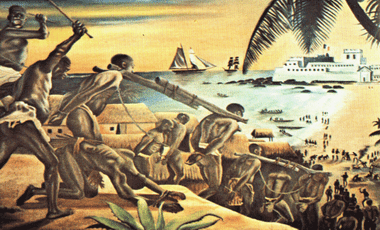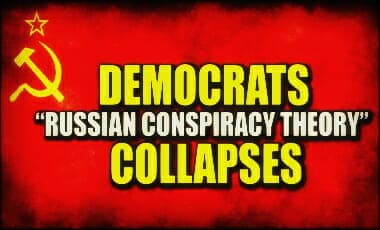…The Wall Street Journal should do a lot better; they asked Azar for the truth. He gave it to them. They chose not to report it. For those who want to know, here is HHS’s offical timeline of what happened in January:
December 31: CDC, including Director Robert Redfield, learns of a “cluster of 27 cases of pneumonia of unknown etiology” reported in Wuhan, China.
January 1: CDC begins developing situation reports, which are shared with HHS.
January 3: Director Redfield emails and speaks on the phone with Dr. George Gao, Director of the China Center for Disease Control and Prevention.
January 3: Director Redfield speaks with Secretary Azar, and HHS notifies the National Security Council (NSC).
January 4: Director Redfield emails Dr. Gao again and offers CDC assistance, stating, “I would like to offer CDC technical experts in laboratory and epidemiology of respiratory infectious diseases to assist you and China CDC in identification of this unknown and possibly novel pathogen.”
January 6: At the request of Secretary Azar, Director Redfield sends formal letter to China CDC offering full CDC assistance.
January 6: CDC issues a Level 1 Travel Watch for China.
January 6: National Institute of Allergy and Infectious Diseases (NIAID) Director Anthony Fauci begins doing interviews on the outbreak.
January 7: CDC establishes a 2019 nCoV Incident Management Structure to prepare for potential U.S. cases and to support the investigation in China or other countries, if requested.
January 8: CDC distributes an advisory via the Health Alert Network, which communicates to state and local public health partners, alerting healthcare workers and public health partners of the outbreak.
January 9: CDC and FDA begin collaborating on a diagnostic test for the novel coronavirus.
January 10: China shares viral sequence, allowing NIH scientists to begin work on a vaccine that evening.
JANUARY 11: FIRST DEATH REPORTED IN CHINA
JANUARY 13: 41 CASES IN CHINA, FIRST CASE REPORTED OUTSIDE CHINA
January 13: NIH shares their vaccine sequence with a pharmaceutical manufacturer.
January 14: The National Security Council begins daily Novel Coronavirus Policy Coordination Council meetings.
January 14: WHO tweets: “Preliminary investigations conducted by the Chinese authorities have found no clear evidence of human-to-human transmission of the novel #coronavirus (2019-nCoV) identified in #Wuhan, #China.”
January 17: CDC and Customs and Border Protection began enhanced screening of travelers from Wuhan at three airports that receive significant numbers of travelers from that city, expanded in the following week to five airports, covering 75–80 percent of Wuhan travel.
January 17: CDC hosts its first tele-briefing on the virus, with Dr. Nancy Messonnier, Director of the National Center for Immunization and Respiratory Diseases, who emphasizes “this is a serious situation” and “we know [from the experience of SARS and MERS that] it’s crucial to be proactive and prepared.”
January 17: CDC posts interim guidance, updated regularly in the coming weeks and months, for collecting, handling, and testing clinical specimens for the novel coronavirus, includingbiosafety guidelines for laboratories.
January 18: CDC publishes interim guidance on how to care for novel coronavirus patients at home who do not require hospitalization.
January 20: The Chinese government confirms human-to-human transmission of the virus.
JANUARY 21: FIRST U.S. CASE CONFIRMED (FROM TRAVEL)[1]
January 21: CDC activates its Emergency Operations Center.
January 21: The Biomedical Advanced Research and Development Authority (BARDA, part of the Office of the Assistant Secretary for Preparedness and Response, or ASPR) begins holding market research calls with industry leading diagnostics companies to gauge their interest in developing diagnostics for the novel coronavirus and to encourage initiating development activities.
January 21: CDC holds its second tele-briefing on the virus, with officials from Washington State, to discuss the first U.S. case, and Dr. Messonnier, who notes “CDC has been proactively preparing for an introduction of the virus here” and that a CDC team was deployed to Washington.
January 21: CDC posts interim guidance, updated regularly in the coming months, on how to prevent the spread of the novel coronavirus in homes and other settings.
January 21: Secretary Azar discusses coronavirus with Lou Dobbs on Fox Business Network, noting “we have been heavily engaged at the outset” of the outbreak, with the CDC and the rest of HHS working under the President’s direction to develop testing and alert healthcare providers.
January 22: Secretary Azar signs a memorandum from CDC Director Redfield determining that the novel coronavirus could imminently become an infectious disease emergency, which allows HHS to send a request to the Office of Management and Budget to access $105 million from the Infectious Disease Rapid Response Reserve Fund.
January 22: FDA, working with test developers, shares an authorization application template with a diagnostic test developer for the first time.
January 22: ASPR stands up an interagency diagnostics working group with BARDA, CDC, FDA, NIH, and the Department of Defense (DOD).
January 22: HHS’s Office of Refugee Resettlement began flagging any children referred from China for risk assessments and, if indicated by their travel and exposure history, for quarantine for up to 14 days before being placed in the general community of the shelter. Screenings expanded to children referred from Iran, Italy, Japan and South Korea on March 2.
JANUARY 22: ALL OUTBOUND TRAINS AND FLIGHTS FROM WUHAN CANCELED
January 23: ASPR convenes a Disaster Leadership Group (DLG), to align government-wide partners regarding the outbreak situation, communications strategies, and the potential medical countermeasure pipeline. The same week, conversations begin with manufacturers of N95 masks, enabling mask production on U.S. soil to rise from about 250 million a year in January to about 640 million a year in March.
January 24: ASPR forms three government-wide task forces—on healthcare system capacity and resilience, development of medical countermeasures (diagnostics, therapeutics, and vaccines), and supply chains—as part of work under Emergency Support Function 8 of the National Response Framework.
January 24: CDC hosts its third tele-briefing on the virus, with Dr. Nancy Messonnier and officials from Illinois, where CDC has deployed a team to respond to the second U.S. case, from travel. Dr. Messonnier notes, “We are expecting more cases in the U.S., and we are likely going to see some cases among close contacts of travelers and human to human transmission.”
January 24: CDC publicly posts its assay for the novel coronavirus, allowing the global community to develop their own assays using the CDC design.
January 25: Five days before WHO’s declaration of a public health emergency of international concern, Secretary Azar preemptively notifies Congress of his intent to use $105 million from the Infectious Disease Rapid Response Reserve Fund.
JANUARY 26: FIVE U.S. CASES CONFIRMED, ALL TRAVEL-RELATED
January 26: ASPR holds first meetings of healthcare resilience, medical countermeasure development, and supply chain task forces, which continue several times a week or daily in the coming weeks.
January 27: In a Washington, D.C., speech, Secretary Azar shares that HHS is “proactively preparing for the arrival of the novel coronavirus on our shores,” noting that “the novel coronavirus is a rapidly changing situation, and we are still learning about the virus.” “While the virus poses a serious public health threat, the immediate risk to Americans is low at this time,” Azar says, noting that he spoke on the morning of January 27 with China’s Minister of Health and WHO Director-General Tedros speak to discuss the novel coronavirus.
January 27: CDC hosts a tele-briefing with Dr. Nancy Messonnier, who notes that new travel recommendations are coming and that “there may be some disruptions” to Americans’ lives as a result of the public health response, but that “this virus is not spreading in the community” in the U.S.
January 27: CDC and State Department issue Level 3 “postpone or reconsider travel” warnings for all of China.
January 27: FDA begins providing updates about processes for approval and authorization to developers of vaccines, therapeutics, diagnostics, and other countermeasures for the novel coronavirus.
January 27: CDC’s Deputy Director for Infectious Diseases, Jay Butler, holds a call with the nation’s governors on the novel coronavirus.
January 28: HHS hosts press briefing by Secretary Azar, Dr. Fauci, Director Redfield, and Dr. Messonnier. Azar says, “Americans should know that this is a potentially very serious public health threat, but, at this point, Americans should not worry for their own safety.” He underscores, “This is a very fast moving, constantly changing situation…. Part of the risk we face right now is that we don’t yet know everything we need to know about this virus. But, I want to emphasize, that does not prevent us from preparing and responding.”
January 28: CDC posts interim guidance, updated regularly in the coming months, for airline crews regarding the novel coronavirus.
January 29: The White House announces the establishment of the Coronavirus Task Force, which begins daily meetings.
January 29: CDC hosts a tele-briefing with Dr. Messonnier, who notes that “despite an aggressive public health investigation to find new cases [in the U.S.], we have not.”
January 29: CDC posts infection prevention and control recommendations for novel coronavirus patients in healthcare settings, updated regularly in the coming months.
January 29: The Chinese government sends email to HHS acknowledging offer of U.S. expert assistance; HHS begins soliciting nominees for mission from across the department.
January 29: ASPR, CDC, FDA, NIAID, and DOD host a listening session with industry—1,468 participants—on medical countermeasure development, health system preparedness, supply resilience, and medical surge needs.
January 29: The first repatriation flight from Wuhan, China arrives at March Air Reserve Base in California, beginning the safe repatriation of Americans and marking the first use of federal quarantine power in more than 50 years. The operation eventually totals more than 3,000 repatriations, with citizens from Wuhan and passengers from cruise ships. Repatriated Americans praise the work of the quarantine teams—including a couple who spent an extended honeymoon at Lackland Air Force Base in Texas.
JANUARY 30: SIXTH AND SEVENTH CASES CONFIRMED IN THE U.S., CLOSE CONTACTS OF TRAVEL-RELATED CASE
January 30: CDC hosts a tele-briefing with Director Redfield, Dr. Messonnier, and officials from Illinois, where a sixth case is identified, in a spouse of a confirmed case who had traveled to China. Director Redfield notes that most cases around the world outside of China are close contacts of travelers, and “the full picture of how easy and how sustainable this virus can spread is unclear.” (A seventh case is identified later that evening.)
January 30: Department of State issues Level 4 warning, “do not travel,” for all of mainland China.
January 30: The Trump Administration hosts a call with Secretary Azar, Director Redfield, Dr. Fauci, and others with the nation’s governors to present the Administration’s action plan on responding to the outbreak.
January 30: In an appearance on Fox News, Secretary Azar notes that, whether the WHO declares a public health emergency of international concern (declared January 31), “That doesn’t change anything about what we are doing here in the United States. … The President is ensuring that we are proactively preparing and also taking the necessary steps to prevent or mitigate any potential further spread here in the United States.”
January 30: Trump Administration budget officials begin discussions about funding needed for development of vaccines and therapeutics, purchases of Personal Protective Equipment for the Strategic National Stockpile, surveillance and testing, and state and local support.
January 30: ASPR launches a coronavirus portal to receive market research packages and meeting requests from industry stakeholders interested in developing or manufacturing medical countermeasures.
January 31: At the recommendation of his public health officials, President Trump issues historic restrictions on travel from Hubei and mainland China, effective February 2.
January 31: Secretary Azar signs a declaration of a nationwide Public Health Emergency, which allowed HHS to begin using a range of emergency authorities and flexibilities, and, together with other subsequent declarations, would allow emergency flexibilities for healthcare providers. At a White House briefing, he notes, “The risk of infection for Americans remains low, and with these and our previous actions, we are working to keep the risk low. It is likely that we will continue to see more cases in the United States in the coming days and weeks, including some limited person-to-person transmission.”
January 31: CDC hosts a tele-briefing with Dr. Messonnier, who notes possible reports of asymptomatic transmission and says, “We are preparing as if this were the next pandemic, but we are hopeful still that this is not and will not be the case.”
January 31: FDA holds a virtual meeting with American Clinical Laboratory Association about the emergency use authorization application process.
